"Der var en stolt Theepotte", "there was a proud teapot", so begins Hans Christian Andersen's 1863 tale, The Teapot, Andersen continuing by recording that said teapot was, "proud of its porcelain, proud of its long spout, proud of its broad handle"; the start of the biography of an everyday household object, the start of the biography of one of those anonymous goods with which we all surround ourselves, that is one of the first items one meets in the Werkbundarchiv - Museum der Dinge, Berlin, exhibition The Story of My Life. Object Biography as Concept, Method and Genre.
And a biography of an anonymous everyday object, alongside the many, many other object biographies featured and discussed in The Story of My Life, which helps assist the Werkbundarchiv - Museum der Dinge explore less object biographies per se as to explore the place and function and relevance and reading of the object biography, and thereby to question our complex relationships with those objects with which we surround ourselves, to question relationships between the human world and the object world.......
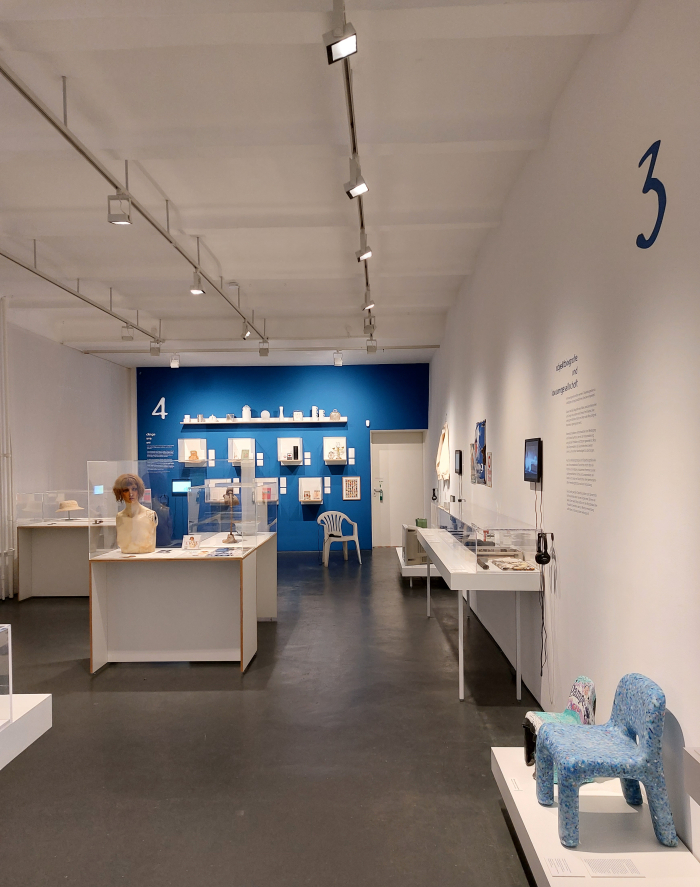
For all that the biography is one of the older literary arts, what, for example, are the greater many religious texts if not biographies, by popular acceptance it wasn't until the 17th, and for all 18th century, that the genre of the biography began to take on its contemporary form, began its assent to its contemporary position in popular culture. The Story of My Life. Object Biography as Concept, Method and Genre opens by arguing that the first object biographies appeared very quickly after the start of the rise of their human equivalents, their human parallels; a not irrelevant (near) synchronicity, and also a very informative (near) synchronicity in context of the condition of and development of human society, certainly the European society that is very much the focus, though not exclusively so, of The Story of My Life.
And an argument advanced in the opening chapter of The Story of My Life via examples of object biographies which, for the curators, represent, identifiable stages in the development of the object biography, including, for example, and amongst other works, Helmina von Chézy's 1829 tale Jugendschicksale. Leben und Ansichten eines papiernen Kragens. Von ihm selbst erzählt — Fates of youth. Life and thoughts of a paper collar. As told by himself — a representative of the so-called Novel of Circulation, the It-narrative, a genre which told and tells animated tales of inanimate objects, and a genre that in many regards marks the beginnings of the object biography; Sergei Tretyakov's 1929 essay Biography of the Thing, in which he argues that rather than basing novels around people, and for all around a central hero, objects should be the central focus of a novel, the heroes if one so will, objects around which and in context of which the narrative develops and interaction occurs, a placing of the object at the centre of human society, and that not just because "the biography of the object is an expedient method for narrative construction that fights against the idealism of the novel", an idealism, certainly a conservative bourgeois idealism a Futurist Constructivist like Tretyakov would have very much been against, but also in context of advancing the new society the likes of Tretyakov envisaged: "books such as The Forest, Bread, Coal, Iron, Flax, Cotton, Paper, The Locomotive, and The Factory have not been written", he laments.1
Or Hans Christian Andersen's aforementioned The Teapot, one of numerous object biographies Andersen penned, a list that includes, and amongst others, biographies of candles, a bottle neck, and flax, the latter bearing a great many similarities to and with Helmina von Chézy's Jugendschicksale, and also indicating that Sergei Tretyakov should have read a little more H.C. Andersen and Helmina von Chézy while theorizing, that wide reading is the key to forming sustainable positions. And object biographies by Andersen which, invariably, are more about their didactic intent than their plot and narrative. As with those earliest religious texts. And those books a Sergei Tretyakov demanded.
And an opening chapter which not only helps one approach the object biography as the concept, method and genre of the exhibition title, but which very neatly and succinctly helps set up and lead one into two chapters which enable considerations on object biographies, on the functions, forms, relevance and reading of objects biographies in various contexts, starting with that context in which you currently find yourself.
A museal context.
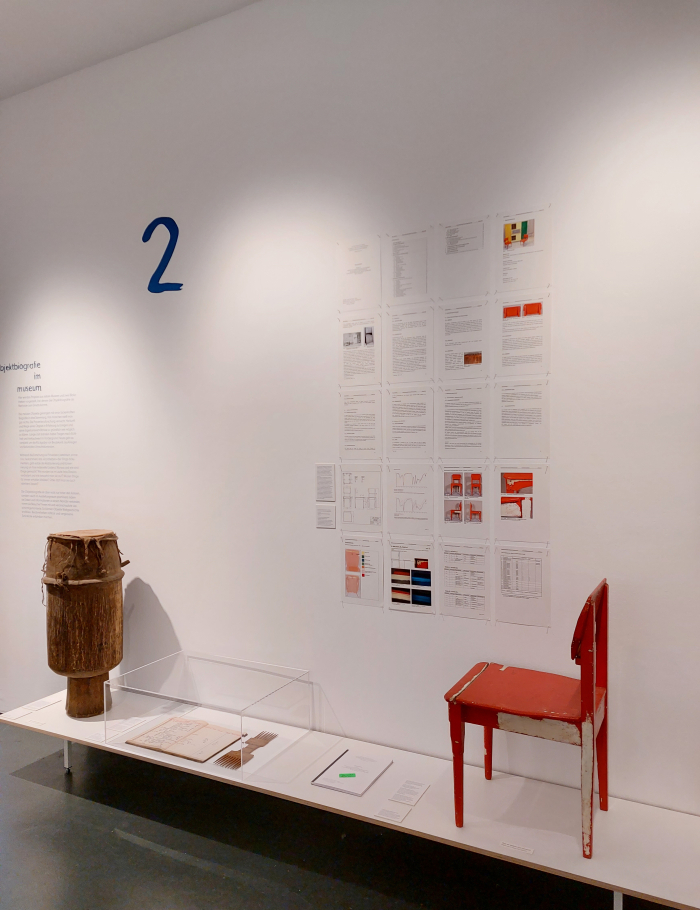
As The Story of My Life argues whereas, once upon a time, any given museum's establishing of an object's biography was important simply for confirming that object's authenticity and any possible monetary value, today the object biography is largely associated with provenance research, not least in context of those great many objects that have been lying unseen in global archives for decades, and of whom no-one can remember how they got there. Then there is the question of restoration, the object's biography being important firstly in terms of what an object is actually composed of, often a problem with, for example, early synthetic plastics where it's unclear what was added to the mix, but also in terms of how, indeed if, one preserves and restores any given object. What does the biography imply and propose one should do? What does it caution against?
In addition The Story of My Life features a brief discussion on Neil MacGregor's 2010 book, and subsequent radio programme, A History of the World in 100 Objects, 100 objects found in the collection of the British Museum, an institution of which MacGregor was Director between 2002 and 2015, was Director of while writing A History of the World in 100 Objects; and 100 objects which, as The Story of My Life notes, caused others to query the validity of the biography an institution such as the British Museum writes for any object in its collection, for all those many, many objects, let's say, not voluntary gifted to the museum by their owners. Something very neatly underscored in MacGregor's 100 by the inclusion of part of the so-called Elgin Marbles: MacGregor being very much the opinion that the Marbles should remain in London and not be returned to Greece, should be housed in the British Museum not the Acropolis of Athens, that their biography is the responsibility of the British Museum, and not of Greek institutions. And a history of the world in 100 objects that also allows access to considerations on the manner in which MacGregor's 100 tell the biography of the British Museum; and thereby helping highlight that any museum's collection is the biography of that museum, with all the proud and less so, objective and subjective, skewed and prejudiced moments it invariably contains. The question is how does a museum approach its biography: openly and critically or as a hagiography.
A question of facing an object biography openly and critically or as a hagiography that is also very much at the heart of a further context in which, as The Story of My Life discusses, the object biography plays an important role:
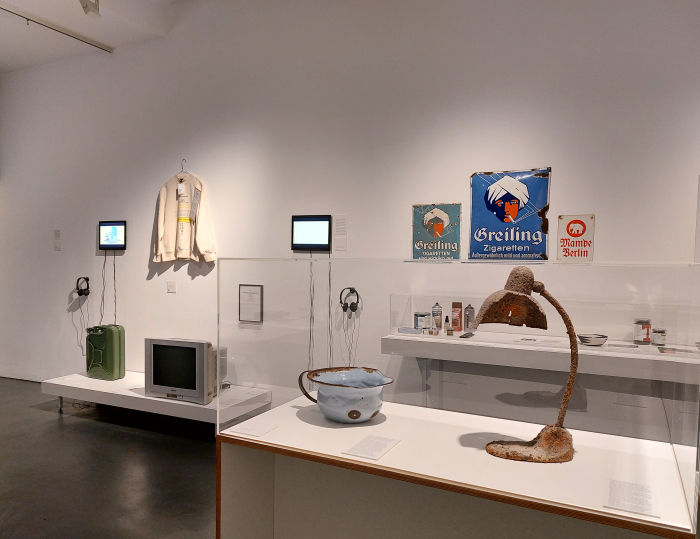
Commerce.
The, arguably, most familiar commercial context in which one meets the object biography is the sales pitch: the object's biography as, and as with museum biographies of yore, the validator of the object's authenticity and particular status, particular desirability, but also increasingly the object biography as a validator of the object's green credentials, its social responsibility, it's inherent diversity, a telling of object biographies we're all exposed to untold times every single day; and object biographies, in terms of our own singular view of the world, that of late have taken on an ever greater role in the marketing of furniture objects, for all re-issues of decades old works by long since deceased designers take extreme care to pitch up the perfect biography by way of enticing a contemporary public who may have been unaware they needed such an object.
However, as The Story of My Life elucidates, the object biography can also highlight injustices, shortcomings, abuses and exploitation in commercial structures and systems; an aspect of the object biography increasingly familiar, for example, in context of clothing manufacturing or intensive, industrial, agriculture, and an aspect discussed in The Story of My Life by, amongst other projects, an old, broken, television the German platform Chapter One fitted out with a GPS sender, handed over to a specialist electronic goods disposal company for professional scrapping....... and subsequently tracked to Agbogbloshie, Accra, where, alongside untold thousands, millions, of other electronic devices illegally shipped there from Europe, it contributed to the extreme local pollution and health problems. An afterlife which, obviously, didn't feature in the glossy sales pitch biography.
Related to the object biography in both a commercial context and a museal context is the object biography in a pedagogic context, the object biography as a means of helping explain an object or a process or a system, which, yes, can have a commercial or cultural component, but can also be about educating: The Story of My Life featuring a collection of so-called Lehrmittelkasten, Teaching Aid Cases, from the 1930s and 40s which explain the biographies of, for example, cast iron, rayon, margarine or flax, the latter being presented alongside the Flax Chair by Christien Meindertsma, a work that, in many regards, is the visual expression of research by Meindertsma on the biography of Dutch flax, the biography of vlas. And a collection of Lehrmittelkasten which brings one, certainly brought us, to the great many public information films Troy McClure narrated and which the Simpson children are so often obliged to watch at school; a connection which underscores that for all the educational value of such information films and teaching aid cases, the context of that education is and was often political, about seeking to condition society to a particular narrative and/or increasing popular acceptance of that which the political leadership sought. A politicised pedagogy we discussed in context of Bauhaus Dessau's project and exhibition Doors of Learning. Microcosms of a Future South Africa and to which we'd add the numerous Werkbundkiste, Werkbund Boxes, via which in the immediate post-War decades the Deutsche Werkbund and their supporters sought to educate West Germans as to what was good and meaningful and contemporary in terms of not only furniture and objects of daily use but also typography, a tradition that went back to the earliest Werkbund days and the activities of a Karl Ernst Osthaus, not least his in 1909 established Deutsches Museum für Kunst in Handel und Gewerbe. And a politicised pedagogy which, yes, does also bring us back to those books a Sergei Tretyakov complained were never wrote. And back to those earliest religious texts.
And thus Lehrmittelkasten that for all they teach you about cast iron, rayon, margarine or flax, are also a gentle admonishment to read object biographies critically.
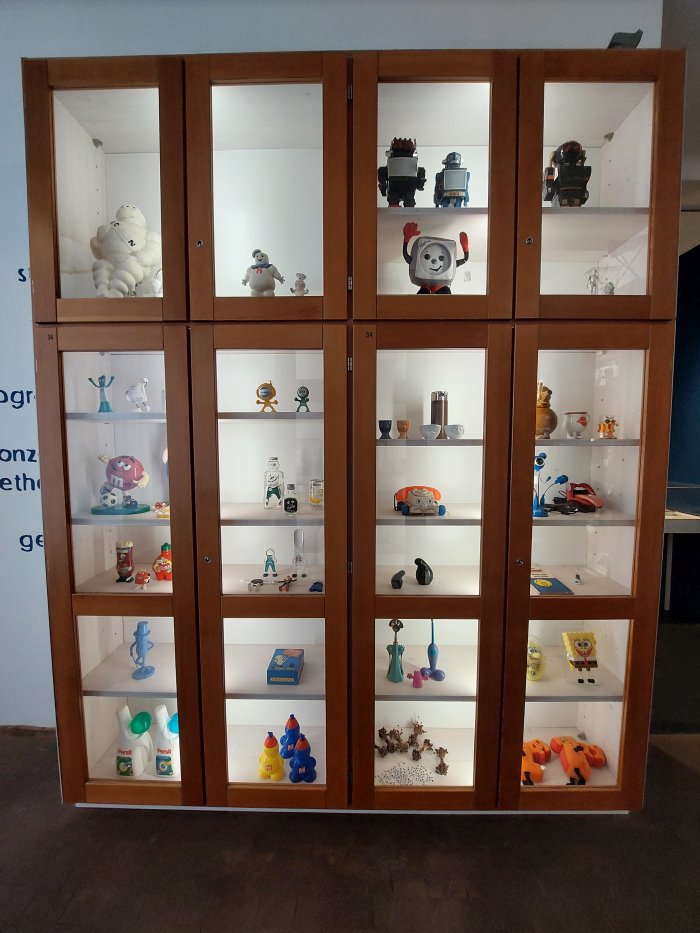
To question what gets left in and what gets left out; as with human biographies object biographies aren't always necessarily the truth the whole truth and nothing but the truth, important elements are often left out, unimportant elements given an inflated importance, connections and relationships not fully elucidated and analysed, something that, arguably, in context of the museal biography once occurred subconsciously on account of a blithe, unquestioning adherence to prevailing appreciations and understandings of society and the world, but which in terms of commercial object biographies is often very deliberate, often the raison d'etre for the writing of the biography. And a questioning of the validity of any object biography playfully discussed by The Story of My Life via a number of thoroughly fictitious, freely and imaginatively invented, object biographies which blur the boundaries between fact and fiction, which employ the tools of the biographer, employ accepted, conventional readings of biographies, to question the validity of the biography. Imagine!!!
To question who gets to tell the biography; in terms of the human biography, for example, the autobiography is not only a very specific genre, but one where the truth is rarely whole, while there a great many estates of deceased public figures, including many authors, artists, architects and designers who allow no, or at best limited, access to the archives and thus prevent an independent telling of a biography and thereby ensure that only one, their, version exists. And with object biographies it is no different, certainly once commerce is involved: doors close, access is restricted, definitives are disseminated with no verifiable source, but whose repetition bequeaths them an authority. But also in terms of culture the telling of biographies is often closely guarded, and that invariably by a dominant sector of a society which is thus enabled, empowered, to tell, essentially, an autobiography of that society, a very narrow autobiography of a very specific object. With all the inevitable consequences that brings for society.
To question why as a society, again primarily in context of The Story of My Life European society, but arguably freely extendable to near all societies, are we so attached to object biographies, why do we seem to need object biographies, why has the object biography not only prevailed but become ever more entrenched in popular culture since it first arose in the late 18th century?
???
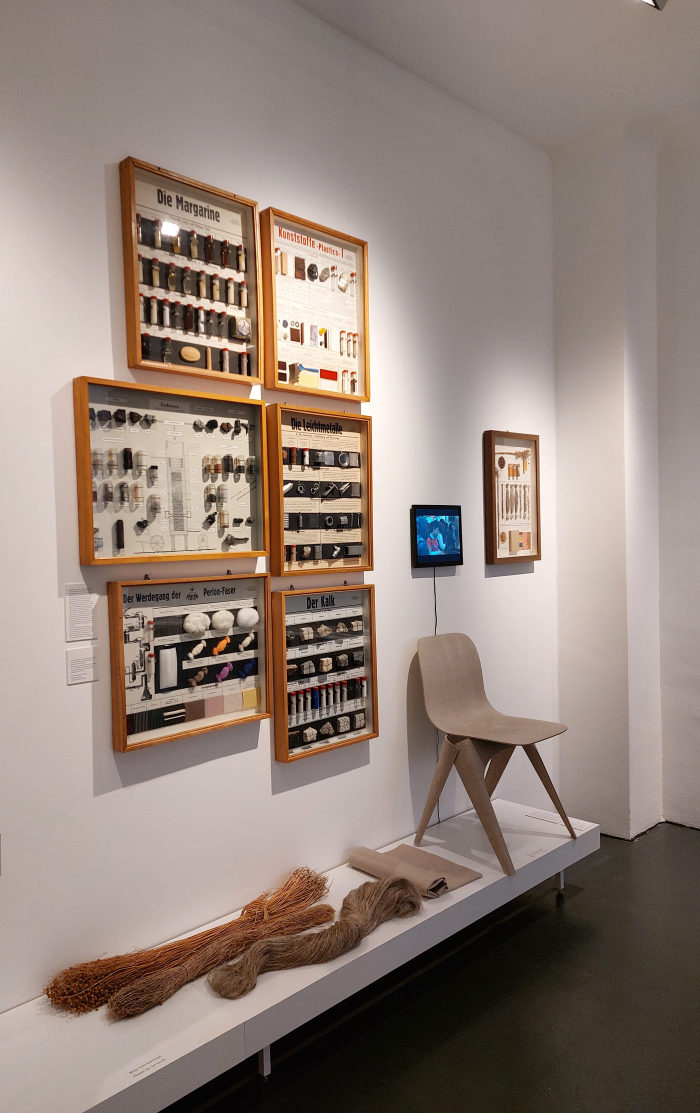
???
Questions of the ongoing function and relevance of the object biography The Story of My Life allows one to frame and approach via a number of angles, including via a shoe buckle and a candlestick holder that once beyond to Goethe, and the question if the biography of those objects, and being near those objects, brings us closer to Goethe? Reflections on Goethe and his possessions that very naturally took us to Weimar, to Goethe's Gartenhaus and to the Donkey, to the chair “just high enough that one can sit half-standing”, that can be found on the first floor: did Goethe actually own it? Did Goethe actually perch on it? Did Goethe actually perch, actually sit half-standing, on it while writing a text you may be particularly fond of? Or is it something added to the Goethe biography after his death? No-one knows, no known records exist to confirm its age or origins or relationship to Goethe; but popular acceptance is that Goethe owned it. And, we'd argue, in our own extension and development of the Donkey's biography, that Goethe possibly designed it, was at least involved in its genesis and development. Or is the popular biography of Goethe's Donkey, and our extension of it, every bit as fictitious as the freely invented biography of the two components of Walter Benjamin's typewriter as told by Roland Albrecht from the Museum für Unerhörten Dinge, Berlin, that stand next to Goethe's shoe buckle and candlestick holder in The Story of My Life, or as fictitious as Annett Gröschner's freely imagined biography of the hare Bucharin, one of a quartet of fictitious biographies commissioned by the Museum der Dinge by way of experimentation and which one can enjoy in The Story of My Life. And if it is, if Goethe never owned, far less designed, a Donkey, does Goethe thereby move further away from us? Or are such object biographies unnecessary crutches we've all come to rely upon, and on which we place a disproportionate value, in supporting and anchoring our appreciations and understandings of an increasingly complex world. Object biographies as simplifiers of the world, as collective proxies for independent thought. Much to the delight of the marketeers and their product biographies.
Similarly, the question of the persistence and position of the object biography in the 21st century is approached in The Story of My Life through the question if the object biography makes it easier for us to associate with objects, to share our lives and our world with objects? If the object biography as a parallel to the human biography is also a component of anthropomorphism, of that confusing of objects for humans.
A proposition the curators seek to develop via, for example, the many objects Alice meets on her journey through, and adventures in, Wonderland; via the German TV star Bernd das Brot, Bernd the Bread, who not only speaks, or more accurately complains and grumbles, but was once actually kidnapped, actually had to be rescued by the actual police from a cellar in Nohra; and via an array of advertising figures and TV characters in the temporary exhibition display cases in the permanent exhibtion space, including, for example, numerous cheerful M&Ms, a Michelin tyre-man, or Mr. Peanut, with his top hat, cane and monocle.
And also via a couple of radios with mouths, objects which cause the curators to ask if the lack of anthropomorphism expressed by contemporary smart speakers, the manner in which smart speakers seek to distance themselves from any connotations of or associations with a human character and nature, is perhaps deliberate, is deliberately undertaken "to avoid humanising the serving device", to underscore they are servient. A question which helps you question that position popular amongst robotics researchers that says robots should look like humans. And the closer the better. Should they? Is being able to differentiate not going to be important going forwards?
Or after some two hundred years travelling parallel are human and object biographies destined to merge, destined to become not just very similar and readily comparable, but become one and the same thing?
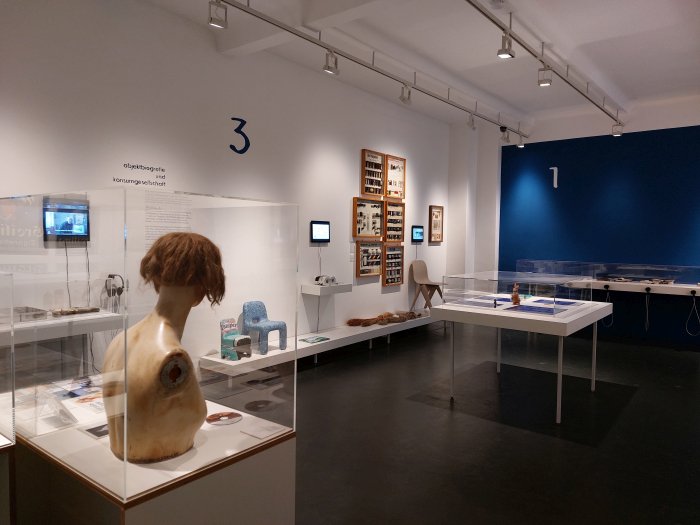
An accessible and neatly paced exhibition featuring a satisfyingly varied mix of objects, contexts and perspectives which exist in communication with one another, and at times merge to help expand and deepen discussions undertaken elsewhere, if we did have one complaint, it would be that The Story of My Life appears to be one told only in German, which isn't normal for the Werkbundarchiv - Museum der Dinge, normally their exhibitions are bilingual German/English. Maybe when we were there the cards with English translations had been mislaid by previous visitors, but if they are/were non-existent that would be regrettable. However, with a decent translation/interpretation app you should have no problems, in any language. And if we did have two complaint it would be the need for an illustration or a video to explain the Berliner Schlüssel, not the book by Bruno Latour featured in The Story of My Life, you'll have to find your own way through that, but the by Latour alluded to double key, that intricate and involved door locking and unlocking system, an object, a concept, that words alone can never, ever, hope to fully explain.
But otherwise The Story of My Life through the manner in which it helps elucidate the regularity with which we are exposed to object biographies, the varying contexts in which object biographies exist, the varying intents that lead to the composing and disseminating of object biographies, the parallels between human biographies and object biographies, allows one to approach better appreciations of, and questionings of, object biographies.
Allows one to approach a better appreciation that understanding object biographies in their entirety, in their completeness, in their honesty, can be, is, an important, indispensable, tool in living more responsibly, more sustainably, less wastefully. That better understanding not only how objects arise, and are nurtured, but also the afterlife of an object can assist us in the development not only of better, more responsible, objects, but of more respectful forms of interaction with objects. Reflections which enable not just differentiated appreciations of a Karl Clauss Dietel’s Gebrauchspatina, that patina of use as an important component of an object, but also allows differentiated reflections on the Tsukumogami of Japanese folklore who one meets in The Story of My Life, those mistreated inanimate objects that return in an animated form after 100 years to torment and take revenge on their abusers. And which, arguably, take on physical forms not just in woodcarvings, plays and manga but in places like Agbogbloshie, in our plastic polluted waters or our burning rainforests.
Allows one to approach a better appreciation, to better comprehend, that for all we talk of objects being anonymous, that's only because we're not asking any questions of them, helps one better appreciate that even in the repetition and regulation of industrial society each object takes it own path and in doing so has varied and various existences, "one is one thing and then becomes quite another"2 as Hans Christian Andersen's stolt Theepotte reflects of its journey; its journey with its many unexpected and unplanned and involuntary episodes, with its many highs and lows, its many twists and turns, its ending far removed from where it began, and thus object biographies which if asked, if explored, would not only allow the anonymous to become an individual.
Allows one to approach a better appreciation that while an object biography is good for providing information, it can never be the singular basis for making an evaluation of an object, that can only arise through interaction with an object, through time spent with an object, through getting to know it beyond the facts of the biography, through getting to know its character in a variety of situations and that via an open and honest exchange and discourse, free from any prejudices the biography may have imbued you with, the biography may have awoken with you.
Which, yes, does all sound like an analogy. And a metaphor.
Which, no, probably shouldn't come as a surprise.
But which you can, should, must, reflect upon as you meander back through the Werkbundarchiv - Museum der Dinge permanent collection exhibition space. And subsequently through the streets of Kreuzberg.
Or through whichever streets you currently meander.
The Story of My Life. Object Biography as Concept, Method and Genre is scheduled to run at the Werkbundarchiv - Museum der Dinge, Oranienstraße 25, 10999 Berlin until Friday September 1st.
1Sergei Tret'iakov, Biografiia veshchi, Literatura fakta, Moscow, 1929 here as reprinted in October: art, theory, criticism, politics, Nr. 118, Fall 2006, MIT Press, Cambridge, Massachusetts As with all names translated from non-latin script based alphabets there are numerous latin script versions of Сергей Третьяков. For reasons of simplicity we've stuck with the standard English Sergei Tretyakov.
2Hans Christian Andersen, Theepotten, first published in December 1863, and now widely available in a great many languages, including, for example, in English at https://andersen.sdu.dk/vaerk/hersholt/TheTeapot_e.html (accessed 22.02.2023)
Full information, including information on opening times, ticket prices, current hygiene rules, and details of the accompanying fringe programme can be found at www.museumderdinge.org